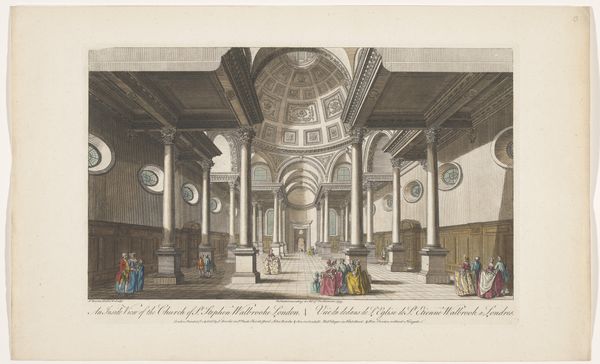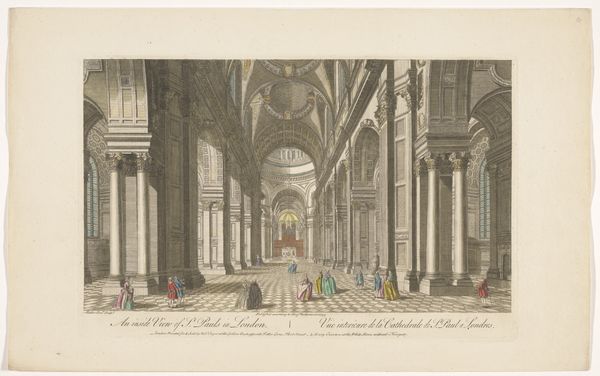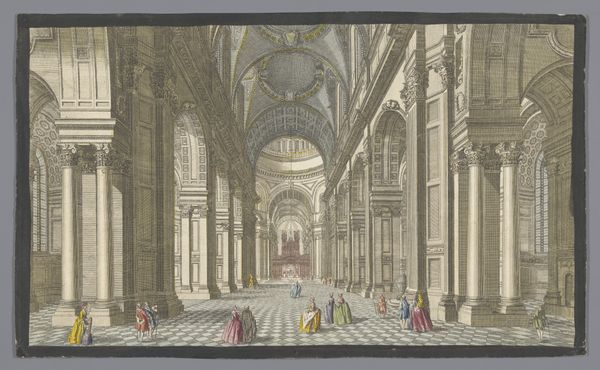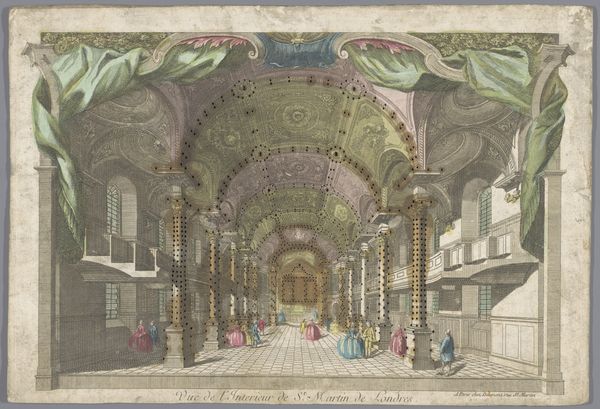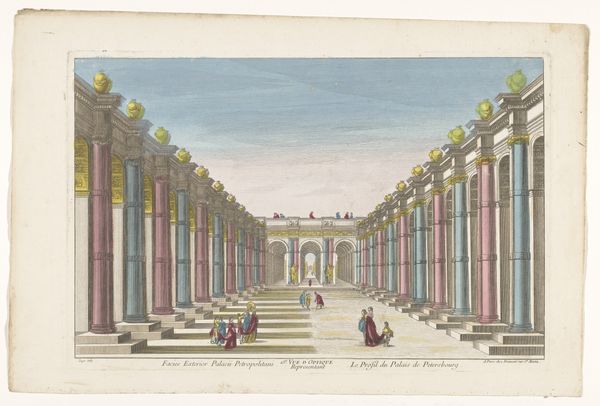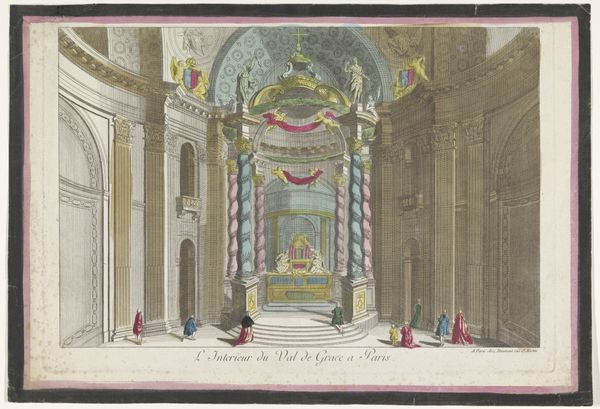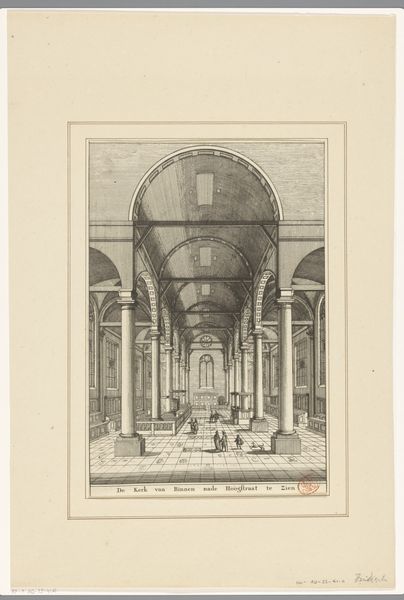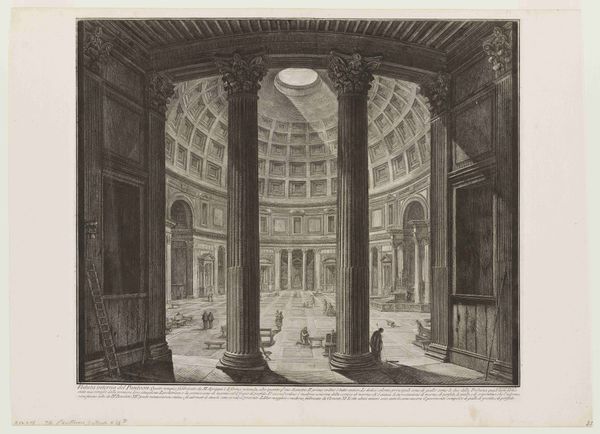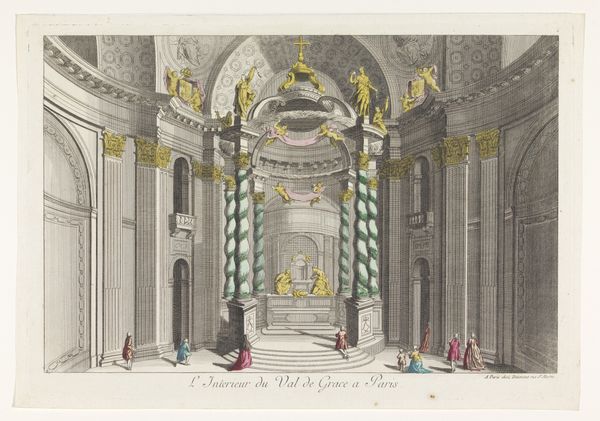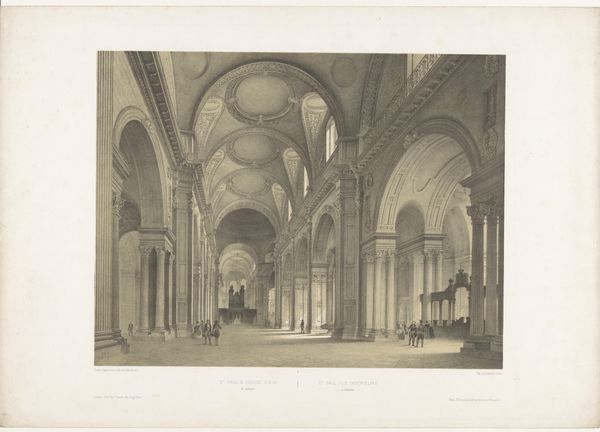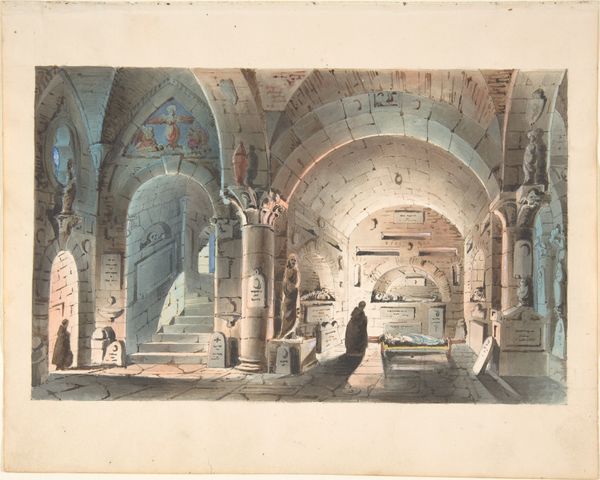
engraving, architecture
#
baroque
#
perspective
#
cityscape
#
engraving
#
architecture
Dimensions: height 304 mm, width 421 mm
Copyright: Rijks Museum: Open Domain
Curator: Let’s turn our attention to this 18th-century engraving titled, “Gezicht op het interieur van de kerk Santa Costanza te Rome.” The print showcases a perspective view of the interior of the church of Santa Costanza. It seems to be rendered in the Baroque style. Editor: It’s lovely, a real exercise in spatial illusion! The columns and arches recede into the distance, leading your eye towards the apse, where the altar glows. Even with the slightly faded colors, there is such grace here. But I wonder about its broader cultural implications. Curator: Well, engravings like this served a very specific function. They weren’t merely decorative; they disseminated knowledge. Think of the Grand Tour, and how travelers acquired such images as records of their visits. Prints made the architecture of Rome accessible to a wider European audience. Editor: That makes sense. But whose audience, exactly? Who was considered part of this "wider European audience?” This idealized view glosses over social realities of access and power dynamics. I imagine most couldn't travel to Rome, reducing the image to a stand-in for lived experiences, ripe for manipulation. And what about the labor required to construct the building itself—whose stories are deliberately excluded? Curator: A fair point. However, consider that Santa Costanza had a rich history well before this print. Originally a mausoleum connected to Emperor Constantine’s family, its transformation into a church speaks volumes about the changing socio-political landscape. This image participates in, and comments on that legacy. The inclusion of figures populating the space helps situate the architecture within a living society. Editor: Those figures seem strangely devoid of emotion, reduced to accessories of the architecture. What could it signify that the humans within the structure are so generalized? Surely we can find evidence that these are political decisions playing out. I'd love to contextualize this with some contemporary critiques of religious authority or architectural representation. How does this image uphold or challenge those established powers? Curator: Ultimately, it seems to be working within those established forms. But it succeeds at recording a version of architectural history—one that speaks to a specific time, audience, and set of social and cultural values. It prompts us to look further. Editor: Absolutely, it prompts so many questions about the social fabric and historical narratives surrounding architecture and art. An engaging object to continue the conversation!
Comments
No comments
Be the first to comment and join the conversation on the ultimate creative platform.

